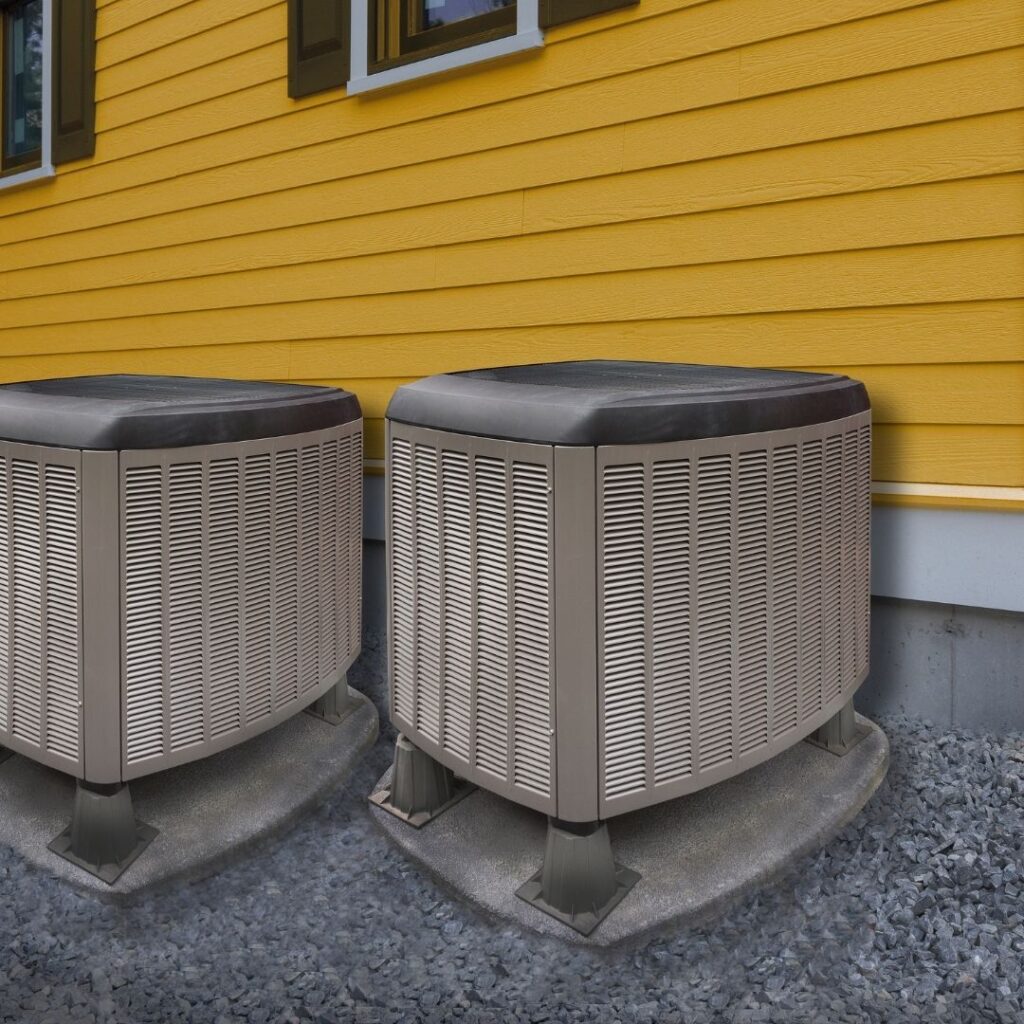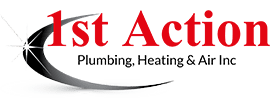Blog
12 Best Upgrades for HVAC 2023

It’s a great time to start thinking about upgrading your HVAC system. An upgrade can improve the efficiency and comfort of your home or business and save you money on energy bills in the long run. In this guide, we’ll discuss some of the best HVAC upgrades for 2023.
Read on!
#12. Replace a PSC Fan Motor with an ECM Drive
One of the best HVAC upgrades you can make is to replace your PSC fan motor with an ECM drive. PSC fan motors are less efficient than ECM drives, which can save you money on energy bills. Additionally, ECM drives are quieter and can help improve the overall comfort of your home or business.
#11. Replace Burners in Oil Furnaces or Boilers
If you have an oil furnace or boiler, upgrading the burners can improve efficiency and reduce emissions. Newer burners are designed to use less fuel and produce fewer emissions, making them more environmentally friendly and cost-effective in the long run.
#10. Upgrade to a Programmable Thermostat
Upgrading to a programmable thermostat is an easy and cost-effective way to improve your HVAC system’s efficiency. With a programmable thermostat, you can set the temperature to automatically adjust when you’re not home or asleep, saving you money on energy bills.
#9. Add Dehumidification
Adding dehumidification to your HVAC system can improve indoor air quality and reduce the risk of mold growth. Dehumidifiers remove excess moisture from the air, which helps reduce humidity levels and make your home or business more comfortable.
#8. Improve Filtration
Upgrading your HVAC system’s air filter can help improve indoor air quality and reduce the risk of allergies and other respiratory issues. Consider upgrading to a HEPA filter or another high-efficiency filter to capture more particles and allergens.
#7. Improve Source-Exhaust Fans
Upgrading your source-exhaust fans, such as bath or kitchen exhaust fans, can help improve indoor air quality and reduce moisture levels. Newer models are designed to be more energy-efficient and quieter than older models, which can improve the overall comfort of your home or business.
#6. Add Whole-House Mechanical Ventilation
Adding whole-house mechanical ventilation can help improve indoor air quality and reduce the risk of indoor air pollution. These systems work by exchanging stale indoor air for fresh outdoor air, which can help reduce the concentration of pollutants and allergens in your home or business.
#5. Seal or Insulate the Duct System
Sealing and insulating your HVAC system’s ducts can help improve its efficiency and reduce energy waste. Leaky ducts can cause air loss, which can make your HVAC system work harder and increase energy bills.
#4. Improve Supply Air Coverage and Balancing Capability
Improving your HVAC system’s supply air coverage and balancing capability can help improve comfort and reduce energy waste. By ensuring that air is distributed evenly throughout your home or business, you can reduce hot and cold spots and improve overall comfort.
#3. Add Ductwork to Extend Space Conditioning
Adding ductwork to extend space conditioning to additional living spaces can help improve comfort and reduce energy waste. By ensuring that all areas of your home or business are adequately heated or cooled, you can reduce the workload on your HVAC system and improve its overall efficiency.
#2. Add Terminal Units to Extend Space Conditioning
Adding terminal units, such as radiators, convectors, or additional ductless heads, can help extend space conditioning to additional living spaces. This can help improve comfort and reduce energy waste by ensuring that all areas of your home or business are adequately heated or cooled.
#1. Add a Dedicated System to Independently Heat or Cool a New Addition
If adding a new room to your home or business, consider adding a dedicated system to heat or cool the space independently. This can improve efficiency and reduce energy waste by allowing you to control the temperature in the new space separately from the rest of the building.
How To Upgrade Your HVAC System
If you are considering replacing or upgrading your HVAC system, there are several important factors to consider before starting the process. By taking the time to assess your current system and confirm the compatibility of any upgrades, you can ensure that your investment is both effective and cost-efficient.
This section will cover some key steps before upgrading your HVAC system.
1. Assess the Need for Replacing or Upgrading the HVAC System
Before making any decisions about upgrading your HVAC system, it’s important to assess the need for a replacement or upgrade. You want to assess the current system’s performance, efficiency, and reliability.
You should start by evaluating the age of your current system. If your HVAC system is over 15 years old, it may be time to consider a replacement or significant upgrades.
Next, you should consider the energy efficiency of your current system. If you have high energy bills, your system may be running inefficiently, which could indicate the need for upgrades or replacement. Additionally, if your system requires frequent repairs, this may also indicate the need for an upgrade.
Other factors to consider are the size of your home or business, your heating and cooling needs, and your budget. Our experienced HVAC technicians in Loveland, CO, can help you evaluate these factors and determine whether an upgrade or replacement is necessary.
It’s also important to consider any changes in your heating and cooling needs since your current system was installed. For example, if you have added an addition to your home or expanded your business, your current system may not be capable of adequately heating and cooling the additional space.
2. Confirm Adequate Remaining Useful Life
Before investing in an upgrade, it’s important to confirm that your existing system has adequate remaining useful life to warrant the expense and effort of an upgrade. If your system is nearing the end of its life span, it may be more cost-effective to replace the entire system rather than invest in upgrades that may only provide short-term benefits.
3. Choose the Right Upgrades
Once you have assessed your current system, you can determine which upgrades are necessary.
Some common HVAC upgrades include:
- Replacing an outdated or inefficient air conditioner or furnace
- Upgrading to a programmable thermostat
- Installing a whole-house dehumidifier
- Sealing and insulating ductwork
- Installing a zone control system to improve comfort and energy efficiency
Each of these upgrades has its benefits, and choosing the right upgrades for your home or business will depend on your specific needs and budget. Feel free to speak with one of our HVAC specialists to discuss your options with an expert.
4. Consider the Return on Investment
When upgrading your HVAC system, it’s important to consider the return on investment. Some upgrades may be more expensive upfront but can provide significant long-term savings on energy bills. For example, upgrading to a high-efficiency furnace or air conditioner can reduce energy consumption and save money on heating and cooling costs.
5. Confirm Compatibility of Upgrades
When considering upgrades to your HVAC system, it’s important to confirm the compatibility of the upgrade with your existing system. This includes verifying power and airflow requirements, as well as compatibility with other system components. A professional HVAC contractor near you can help you determine which upgrades are compatible with your system.
6. Complete Inexpensive and Easy Fixes First
Before investing in costly upgrades, it’s important to complete any inexpensive and easy fixes that can improve the performance of your existing system. This includes repairing and cleaning dirty components, which can significantly improve the efficiency and performance of your system.
7. Hire a Professional HVAC Contractor
Upgrading your HVAC system is not a DIY project. It’s important to hire a professional HVAC contractor to ensure that the upgrades are installed correctly and function properly. A professional contractor can also help you determine which upgrades are necessary and which ones will provide the most benefits.
Final Thoughts: Best HVAC Upgrades 2023
Upgrading your HVAC system in 2023 can bring numerous benefits, including improved efficiency, enhanced comfort, and long-term cost savings.
Considering some of the best HVAC upgrades for this year, like replacing a PSC fan motor with an ECM drive, upgrading burners in oil furnaces or boilers, and adding a programmable thermostat, you can maximize the performance of your system. Other upgrades, like improving filtration, dehumidification, and sealing/insulating the duct system, can improve indoor air quality and energy efficiency.
As you consider upgrading your HVAC system, contact our HVAC specialists in Loveland, CO. We can guide you through the process, help you choose the right upgrades, and provide professional installation services.
FAQs
What are the big changes coming in 2023 for HVAC units?
The US Department of Energy (DOE) raised the efficiency standards for central air conditioners and heat pumps from January 1st, 2023. This means air conditioners and heat pumps will need to meet higher minimum SEER ratings, with 14 SEER required for residential systems used in the northern region and 15 SEER for the southern region.
Are HVAC prices going down in 2023?
HVAC prices are actually expected to go up in 2023 due to the new SEER standards. This will affect both installation and repair costs for homeowners and business owners.
What will replace R410a in 2023?
The two most likely replacements for R410a are R-32 and R-454B. We’ll keep you updated on any new developments!
How much does a new HVAC system cost in 2023?
On average, the cost of a new HVAC system installation in 2023 can range from $6,000 to $12,000, depending on the size of the system, the complexity of the installation, and the type of system being installed. Additionally, the cost of the HVAC system itself will also vary depending on the brand, model, and efficiency rating.
Getting a detailed quote from a local HVAC contractor is always a good idea to understand the costs associated with your specific project.
